Last Updated on 29 July 2025 by Greg Brookes
Kettlebell training can be an empowering way to stay strong, mobile, and energised throughout pregnancy, if done safely and intentionally. As a coach who’s worked with prenatal clients for over a decade, I’ve seen firsthand how smart training can ease common discomforts, boost energy, and build strength for labour and beyond.
But let’s be clear: pregnancy isn’t the time to start swinging heavy bells for the first time. If you’re new to kettlebells, I’d steer you towards more foundational prenatal movement. However, if you already train with kettlebells and your pregnancy is uncomplicated, you can absolutely continue, with the right modifications.
Who This is For
If you’ve been using kettlebells regularly and are comfortable with the basics, this guide is for you. We’ll cover which movements are generally safe, how to modify across trimesters, and what to avoid. Always check with your healthcare provider before starting or continuing any training routine.
Benefits of Kettlebell Training During Pregnancy
Kettlebell training can support a healthy, active pregnancy in several meaningful ways.
- Improved posture: Many pregnant individuals struggle with posture changes due to a shifting centre of gravity and increased breast and belly size. Kettlebell movements like rows and deadlifts target the posterior chain and help realign the body.
- Pelvic floor support: When paired with coordinated breathing, exercises such as goblet squats and carries can enhance pelvic floor awareness and strength, crucial for labour and recovery.
- Labour preparation: Kettlebell workouts build the muscular endurance and controlled breathing patterns that are invaluable during labour and delivery.
- Back pain relief: Strengthening the core and stabilising muscles helps reduce or prevent lower back pain, one of the most common pregnancy complaints.
- Mental wellbeing: Staying active helps regulate mood, improves sleep, and provides a welcome sense of routine and control during a period of major change.
Safety Guidelines: Training Smart Through Every Trimester
Staying safe while training with kettlebells during pregnancy means adapting your approach to fit the physical and hormonal shifts of each trimester.
- Get medical clearance before training. Every pregnancy is unique, and your provider can help identify any specific contraindications.
- Focus on control, not intensity. Avoid training to failure. You should finish sessions feeling energised, not drained.
- Use breath coordination. Inhale on the reset or downward phase of the movement, and exhale gently on exertion to manage intra-abdominal pressure.
- Avoid exercises that spike pressure in your core, particularly if you notice coning, bulging, or pelvic floor symptoms.
- Eliminate flat-back movements after the first trimester. Lying on your back can reduce blood flow and should be swapped for inclined or upright alternatives.
- Prioritise stability and posture over weight. Use a wider stance and slower tempo to stay grounded.
- Stay well-hydrated and rest often. Recovery takes longer during pregnancy, and your energy needs shift weekly.
Trimester Training Guide
| Trimester | Recommended Movements | Avoid |
|---|---|---|
| 1st | Swings, squats, presses | High volume/intensity if fatigued |
| 2nd | Goblet squats, rows, carries | Exercises lying flat, twisting |
| 3rd | Deadlifts, seated presses, light carries | Swings/snatches, heavy loads |
Top Kettlebell Exercises for Pregnancy
Here are my go-to movements for clients already comfortable with kettlebells:
1. Goblet Squats
(See full breakdown in: Kettlebell Goblet Squat)
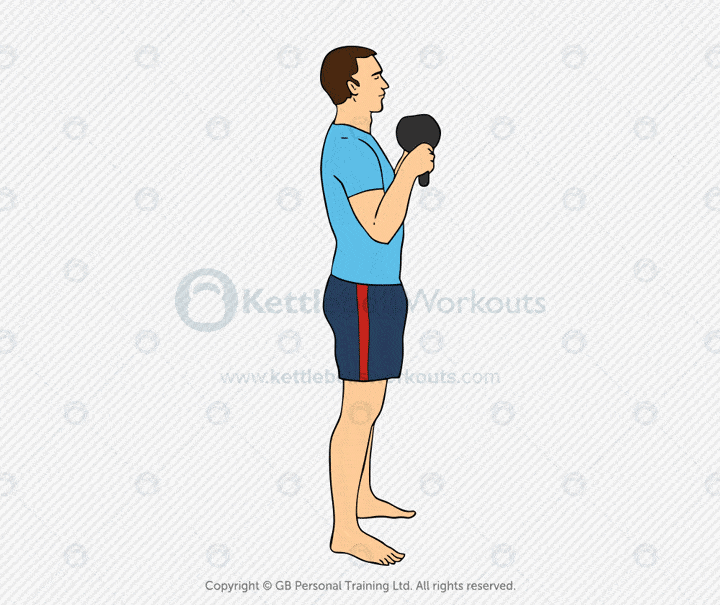
Builds lower body strength while promoting an open hip position. Great for pelvic floor engagement when paired with controlled breathing.
2. Regular / Supported Lunges
(See full breakdown in: Kettlebell Reverse Lunge)
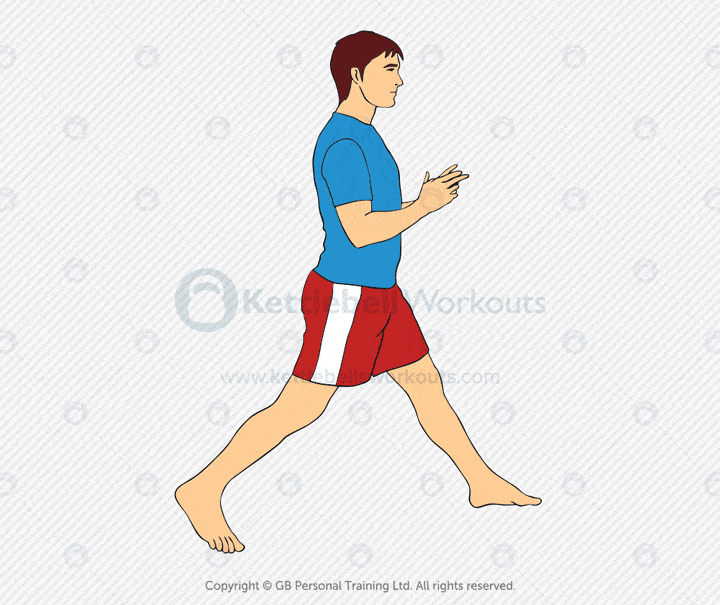
Targets legs and glutes while improving balance. Use a wall or chair for added support.
3. Kettlebell Deadlifts
(See full breakdown in: Kettlebell Single Arm Deadlift)
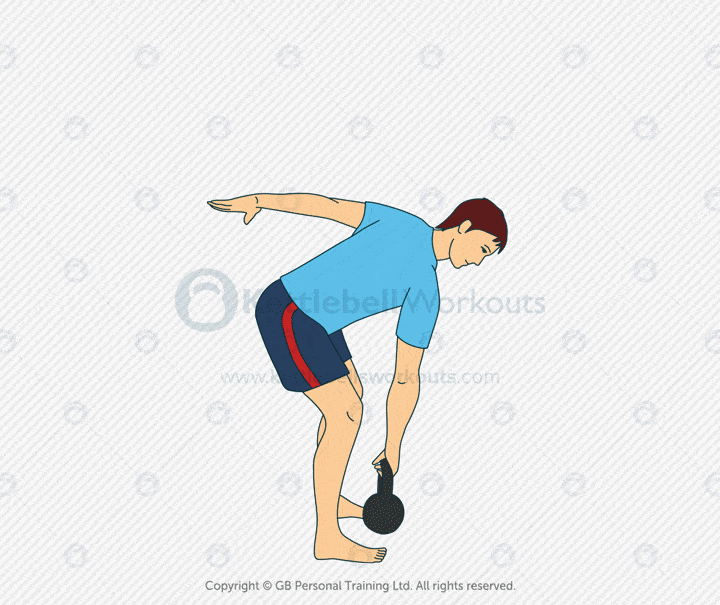
Strengthens glutes, hamstrings, and back. Use sumo or suitcase stance for comfort. Maintain a neutral spine and tight core.
4. Seated Shoulder Press
(See full breakdown in: Kettlebell Overhead Press)
Builds upper body strength without standing pressure. Use a bench or box to avoid overhead strain.
5. Bent-Over Rows
(See full breakdown in: Kettlebell Bent Over Row)
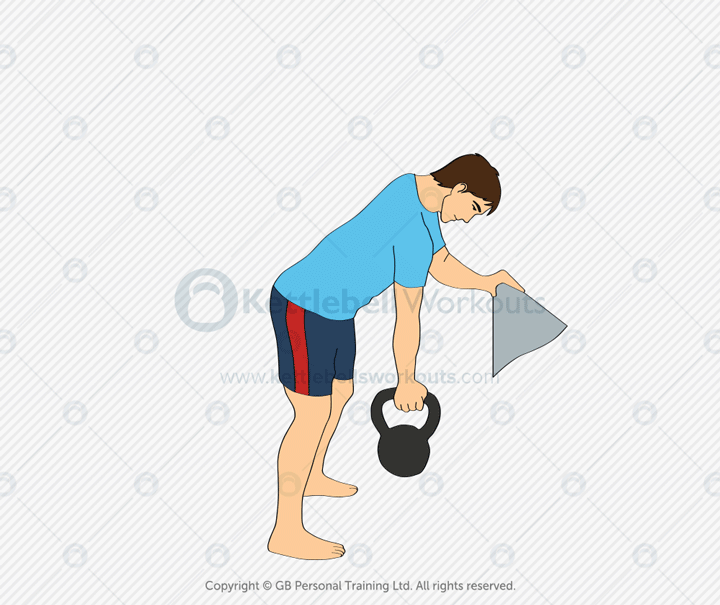
Enhances posture and upper-back strength. Support one hand on a bench or chair for stability.
Exercises to Avoid During Pregnancy
While kettlebells are highly adaptable, some movements are better left out during pregnancy. Exercises that significantly increase intra-abdominal pressure, compromise balance, or strain the lower back should be avoided. These include:
- Lying flat on your back after the first trimester: This can restrict blood flow and lead to dizziness or discomfort.
- High-impact or ballistic movements like snatches, jerks, and jumping squats: These demand a high level of core stability and can be jarring for the pelvic floor.
- Deep twisting or rotational exercises: These may place unnecessary torque on your midsection.
- Hardstyle swings: While manageable for some, many find the breath bracing and forceful hip drive to be too demanding on the abdominal wall and pelvic floor. Opt for reduced-range or single-arm variations if continuing swings.
Sample Prenatal Kettlebell Workout
A balanced, full-body workout can help you feel grounded, mobile, and strong. Here’s a sample session I’ve used with clients across all trimesters:
Warm-up: (5 minutes)
- Cat-cow (30 sec)
- Hip circles (30 sec each direction)
- Bodyweight squats (10 reps)
- Deep diaphragmatic breathing (1–2 min)
Main Workout (2–3 rounds, rest as needed between exercises):
- Goblet Squat x 8-10 reps – focus on depth and breath timing
- Single-arm Deadlift x 6-8 reps/side – maintain a flat back and even weight shift
- Seated Press x 6 reps/side – keep ribs stacked and feet grounded
- Supported Row x 6-8 reps/side – exhale as you row, avoid twisting
- Farmer Carry x 20 steps – use a moderate weight and walk with control
Greg’s Take
In coaching pregnant clients, my number one focus is control over intensity. We work on connection breathing, exhaling gently as you engage your pelvic floor, to keep pressure managed. I’ve had clients comfortably train into the third trimester just by listening to their body, adjusting their stance, and swapping heavy swings for stability work.
Final Thoughts
Pregnancy isn’t the time to set PRs, but that doesn’t mean training stops. With the right mindset and movement choices, kettlebells can help you stay strong, confident, and connected to your body as it changes.
Always listen to your body. Rest often. And don’t hesitate to skip a session if your energy is low. The goal now is preparation and presence, not performance.
Looking for more safe, effective kettlebell workouts beyond pregnancy? Explore my full training guide for every body, including beginner and postpartum-friendly options.
Frequently Asked Questions
Stop or modify if you feel pelvic pressure, dizziness, pain, or any unusual symptoms.
Yes, they build strength and breath control which can assist with pushing and positioning.
Yes, if it’s pressure-managed. Skip crunches. Try bird dogs, side planks, and pelvic tilts.
Once cleared by your provider. Start with bodyweight and breathwork, then reintroduce kettlebells gradually.
Sometimes, in early pregnancy if you’re highly experienced and symptom-free. But even then, single-arm or reduced-ROM swings are usually safer.
Disclaimer: This article is for informational purposes only and not medical advice. Consult your healthcare provider before starting or modifying any exercise program.

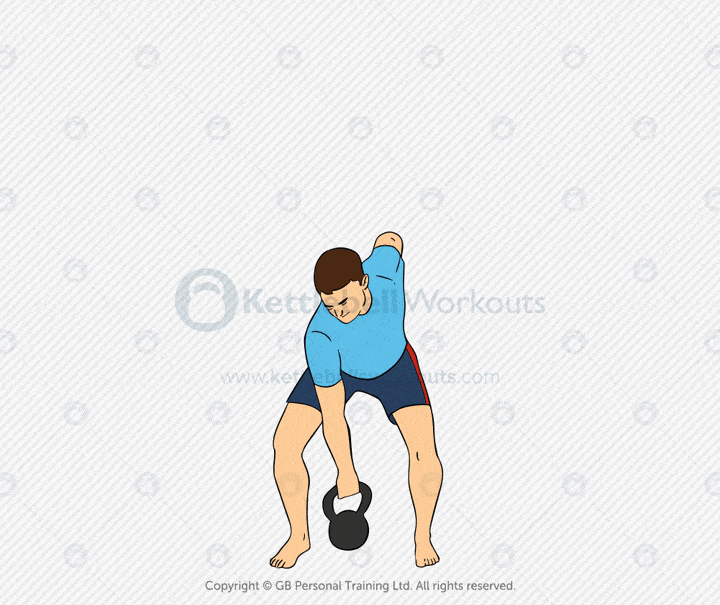


Comments